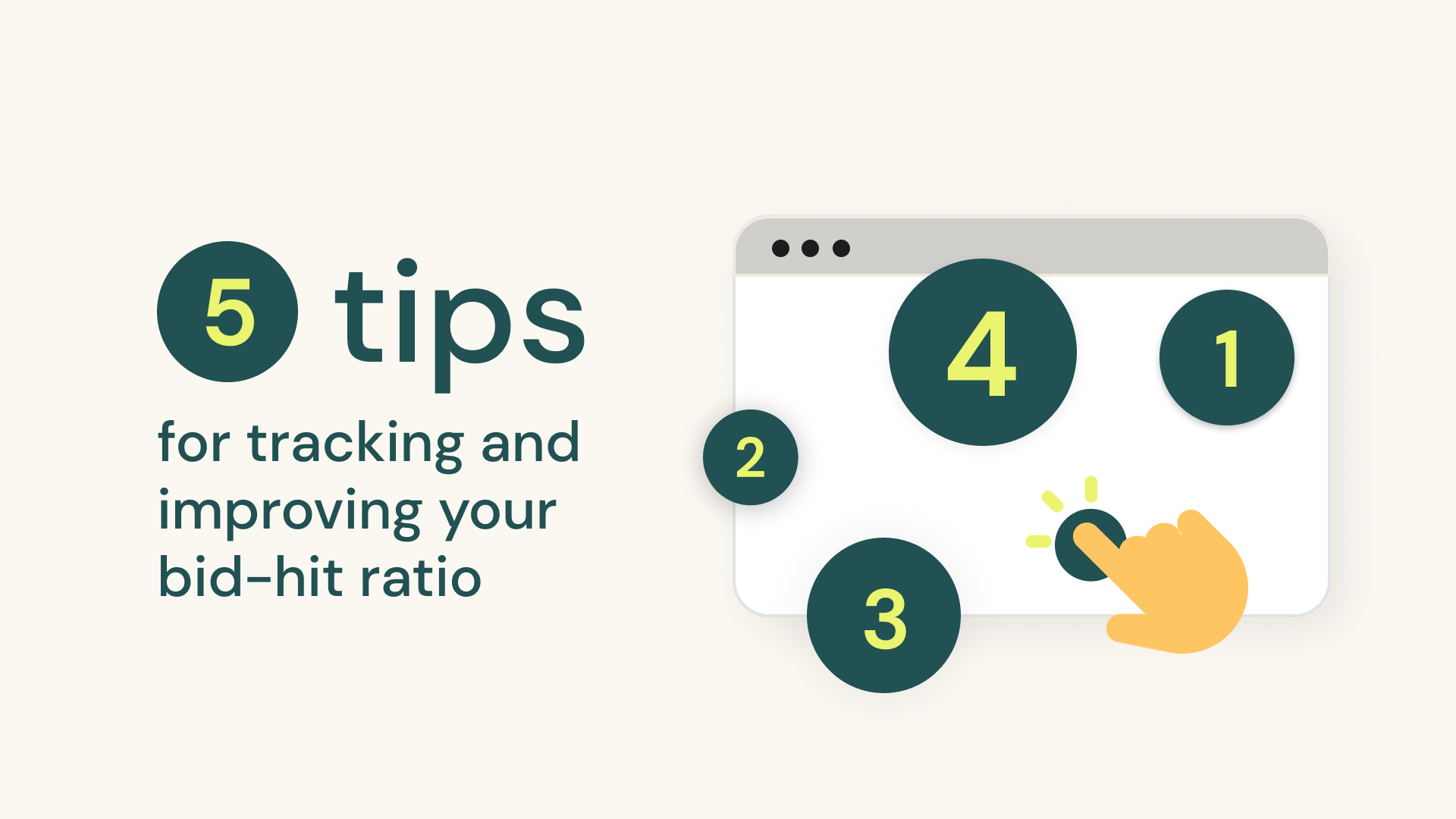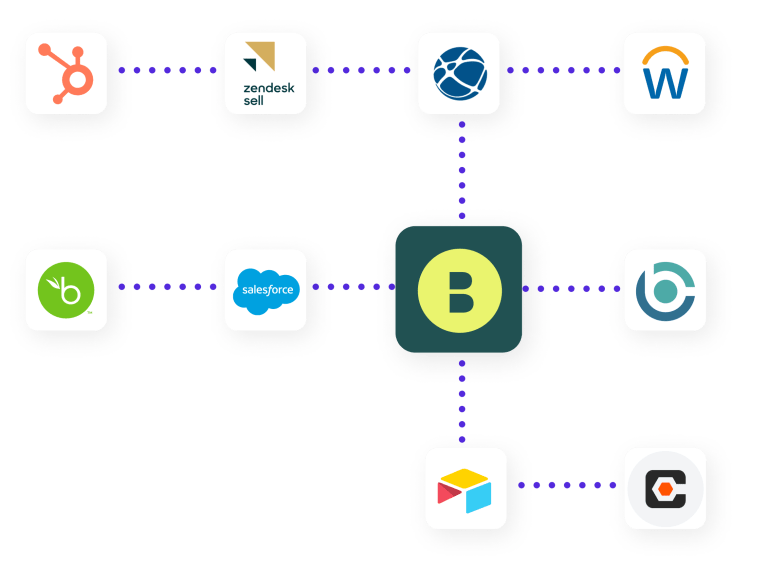Your bid-hit ratio is the rate at which project opportunities are won and is often a great indicator of how effective your bidding and proposal processes are. A lot of contractors will simply use the number of successful bids as an indicator of success, but there are plenty of other factors that should be considered. Bidding on projects, win or lose, takes a lot of time, energy, and money. Let’s take a look at a very basic example:
Table of Contents
Two contractors each successfully bid on one project last month. Contractor A bid on five total projects, while contractor B bid on ten.
- Company A has a bid-hit ratio of 5:1 for the month
- Company B has a bid-hit ratio of 10:1 for the same month
Both companies have won the same amount of projects, but when you take into consideration the time and effort that went into those extra five bids – Company A not only has a more effective bidding strategy, they’re likely also more profitable and competitive because of it.
While tracking successful bids is certainly a good starting point, tracking your bid-hit ratio can help identify projects that are likely to be more profitable and should be pursued more aggressively. Your bid-hit ratio can also be used to identify top performers when it comes to winning projects, as well as the team members that may require more coaching.
So the question is – what is your organization’s bid-hit ratio and how can it be improved? In this blog, we’ll outline 5 tips to help better understand your bid-hit ratio and how to leverage that information to improve your bidding strategy.
5 tips for tracking and improving your bid-hit ratio
1. TRACK YOUR COMPANY’S WINS AND LOSSES
Knowing your bid-hit ratio can help determine the type(s) of projects your company goes after, how many you should be pursuing at any given time, and which clients are most likely to award your firm the contract. By tracking your bid-hit ratio, you’ll also be able to identify trends in the types of clients and projects that generate the most profit.
Equally important to knowing which clients and projects to go after is knowing which clients and projects your organization should be avoiding sinking too much time into.
So what is the best bid-hit ratio? This can vary from contractor to contractor based on the type of project, the client, the location, etc. The lower your ratio the better, but the best ratio is what works best for your organization.
George Hedley, author of “The Biz-Builder Blueprint for Contractors”, surveyed over 5,000 general contractors and subcontractors to create an average bid-hit ratio based on different criteria. The results were as follows:
General Contractors
- Public works – 6:1 to 10:1
- Private works – 4:1 to 6:1
- Negotiated work – 2:1 to 4:1
- Design/Build – 2:1 to 4:1
Subcontractors
- Public works – 7:1 to 11:1
- Private works – 4:1 to 6:1
- Negotiated work – 3:1 to 4:1
- Design/Build – 3:1 to 4:1
Hedley also indicates that less than 6% of contractors will know and track their bid-hit ratio. Knowing where you stand is the first step to making improvements and knowing where you win and where you lose. If your organization is leveraging a CRM for project opportunities, make sure to keep all lost projects archived. This information can be leveraged to better understand where your bidding strategy is falling short.
Workforce intelligence tools like Bridgit Bench also help to track project pursuits. Customers can track project opportunities and pencil in project teams to understand how it impacts their capacity planning and whether additional resources are needed. Once a project is won, your workforce planning process is already confidently underway knowing you have the capacity to deliver a quality project. For more information about workforce intelligence, check out this guide.
2. SEGMENT YOUR BID-HIT DATA TO IDENTIFY TRENDS
Being able to slice and dice your bid-hit data can help you identify more granular trends in your bidding strategy. You want to be able to segment your bid-hit data by:
- Project types
- Project sizes
- Geographical location
- New construction or remodel
- Negotiated or bid
It’s also important to track the owner you bid to. Understanding your bid-hit ratio for these different segments helps to understand where you should focus your estimating efforts. If, for example, you see a bid-hit ratio of 12:1 on commercial projects and 6:1 on residential projects, that’s likely a good indicator that you should narrow your bid focus on more residential work.
Seeing your bid-hit ratio with different project owners can also help identify which customer relationships are stronger and more likely to result in an awarded contract, and which relationships might need more nurturing or should be left alone altogether.
Because of its advanced filtering and customizations, Bridgit Bench can help you better understand your bid-hit ratio based on project size, owner, location, build-type, or any project data relevant to your organization.
3. SHOW OFF YOUR PROJECT TEAM AND WHAT THEY BRING TO THE TABLE
If you’re bidding on projects, at some point it’s likely you’ll sit down with the owner for a project interview. In recent years, project owners have become more likely to award a contract to the project team with price being only a small factor of the decision criteria. The interview, or any face to face time you get with the project owner, as a great opportunity to introduce your project team and give them a chance to show off their expertise and experience.
Don’t hesitate to sit down with your team ahead of the interview to run through the agenda, and areas where your team members can contribute ideas and project long and short-term needs of the project. It might even be worth taking a trip to the project site. Knowledge is power, so anything you can do to increase your team’s knowledge of the project and the owner will help demonstrate their authority and expertise.
By leveraging pursuit tracking in Bridgit Bench, contractors are able to pencil in their perfect project team for every opportunity without impacting their overall strategy until the contract is won. Contractors can also export project teams by way of custom reports that can be sent to owners. Providing an owner with a full roster, including relevant experience and skill sets, can help give your company a leg up against the competition. For information about writing an executive summary, check out this guide.
4. TRACK THE COMPETITION TO LEARN FROM THEIR STRATEGIES
Try to get an understanding of which competitors are bidding on the same projects as you. This provides similar insights as segmenting your bid-hit data. By including competitors you’re able to easily calculate your bid-hit ratio depending on how many, and which, competitors are also bidding.
By identifying the tipping point where your firm becomes less likely to win a project bid based on the number of competitors, you’re better equipped to avoid clusters of contractors competing for the same contract. That means you can put more time and effort into the project opportunities you’re more likely to win and, as a result, improve your bid-hit ratio.
5. BID SELECTIVELY AND BASED ON YOUR DATA LEARNINGS
You’ve taken the steps to track and segment your bid-hit ratio based on build types, owners, and competitors. Now it’s time to leverage that data. You’ll want to understand which segments have the best and worst bid-hit ratios, and how profitable projects in these segments are. At the end of the day you still need to be making money, after all.
Don’t be disheartened to see a low bid-hit ratio as well. Think of it as an opportunity. You can put in extra effort to try to improve your ratio for a specific segment, or decide that those efforts would be better applied to a segment where a win is more likely or projects are more profitable.
Play where you win the most, and take caution when exploring new types of projects. New projects amplify the short term risk you’ll be exposed to, especially during the design and construction phases. The experience and relationships you’ve built in your area of expertise are a massive competitive advantage in the long run. By sticking to what you know and do best you’re better able to foresee issues right from the start.
Found this article useful? We recommend reading this next article on “How to find construction jobs to bid on.”
Think your workforce planning meetings could be more productive?
Download our ebook to learn how to run efficient, effective workforce planning meetings with your team.





